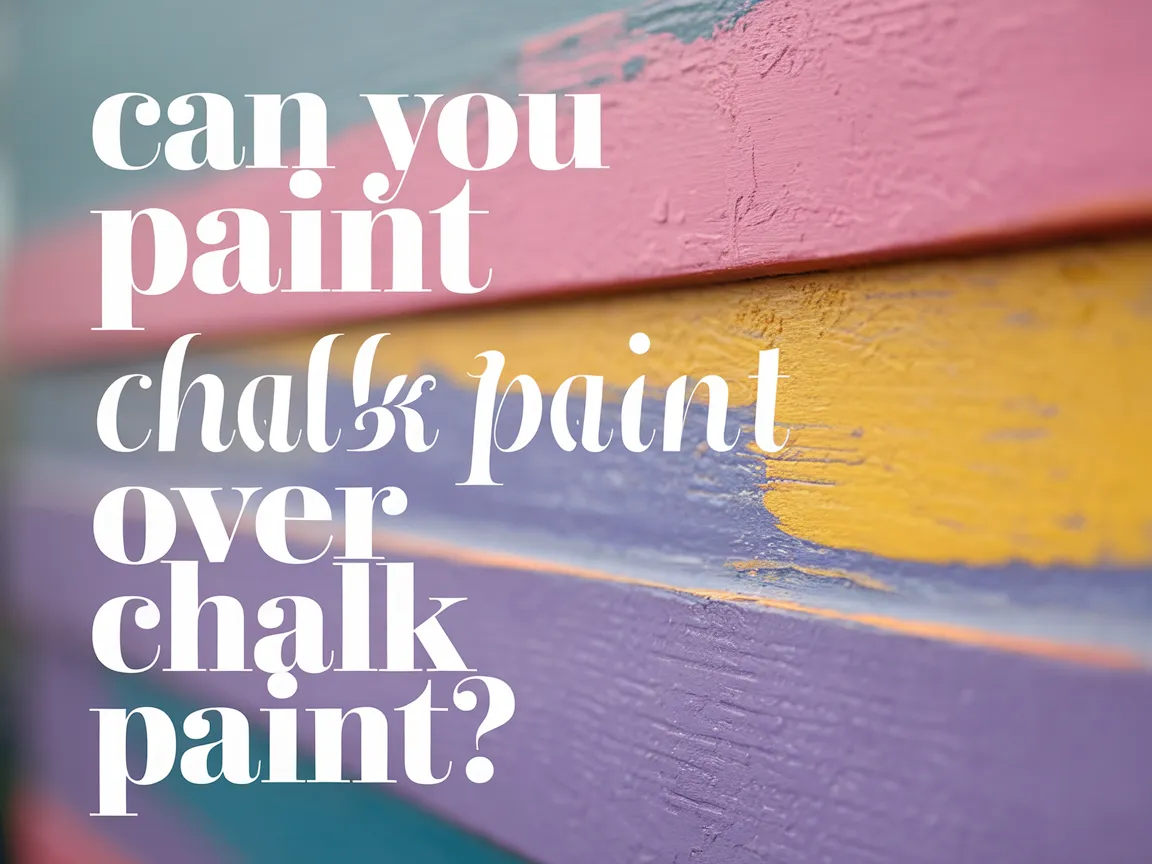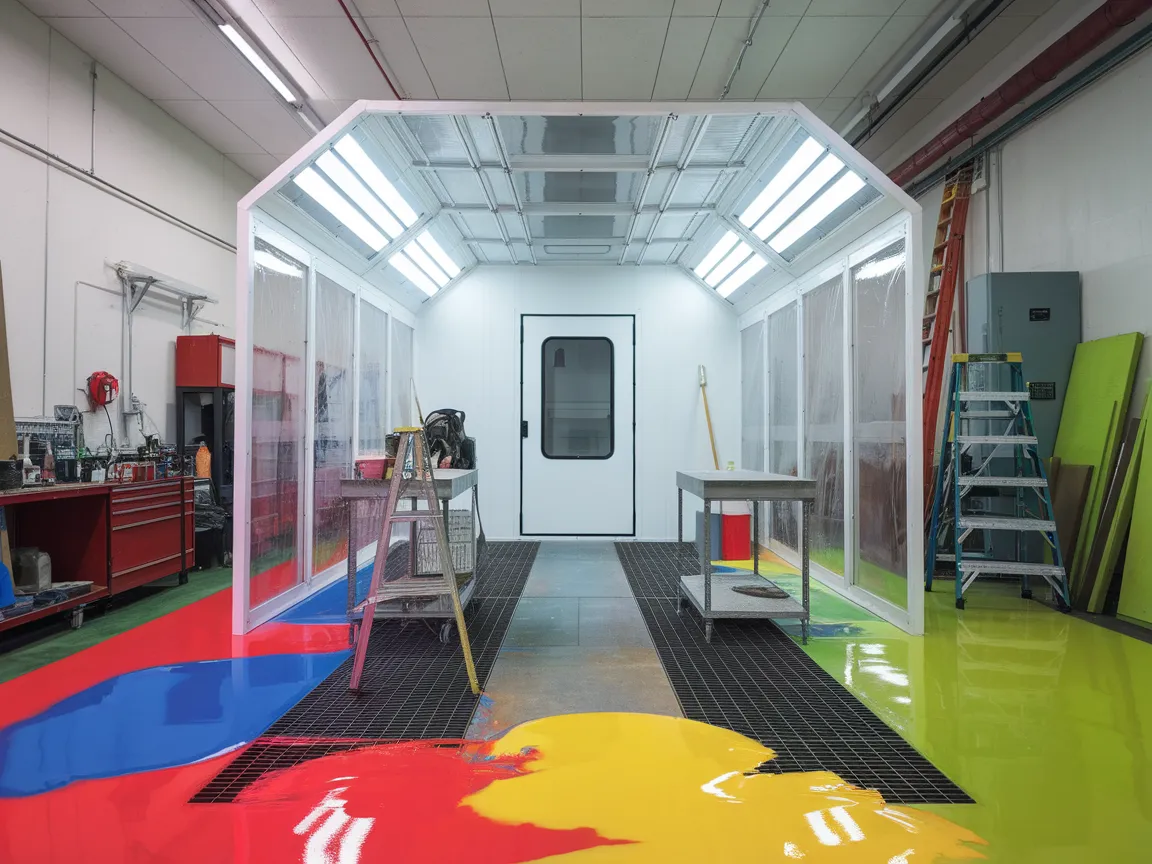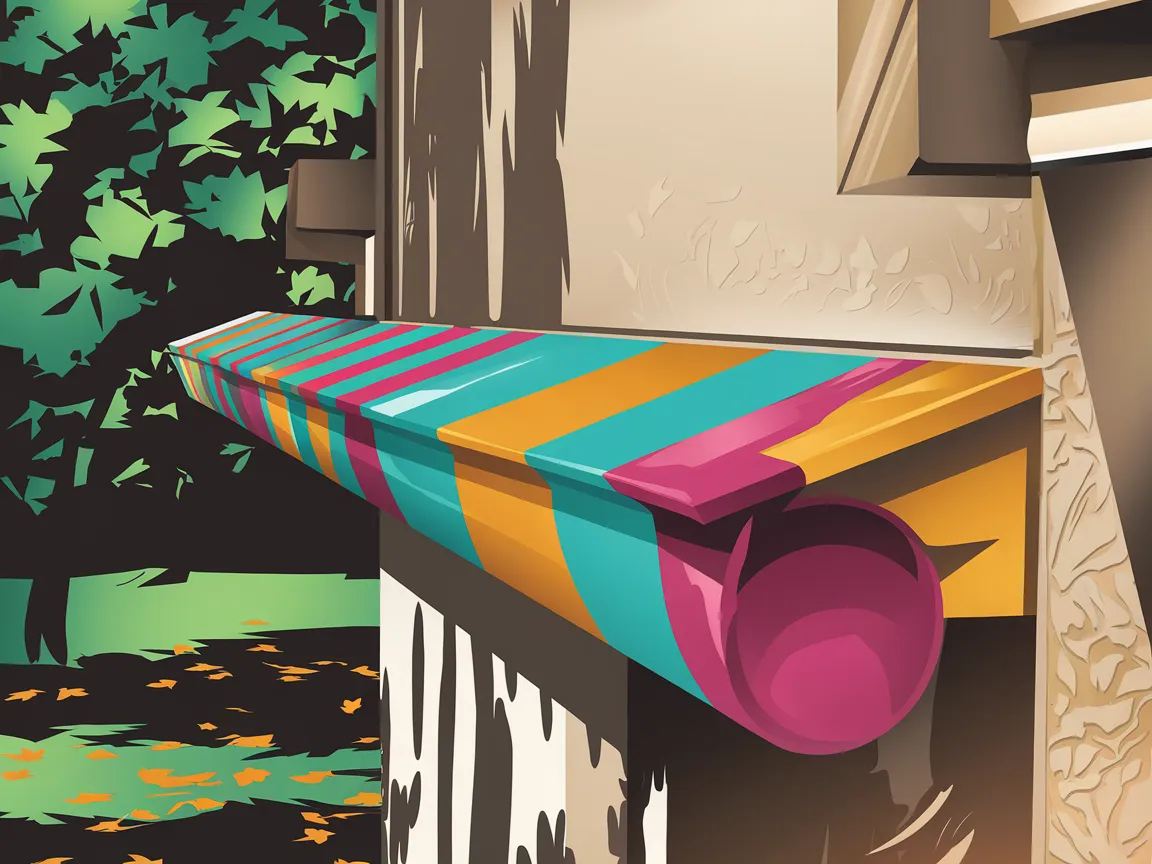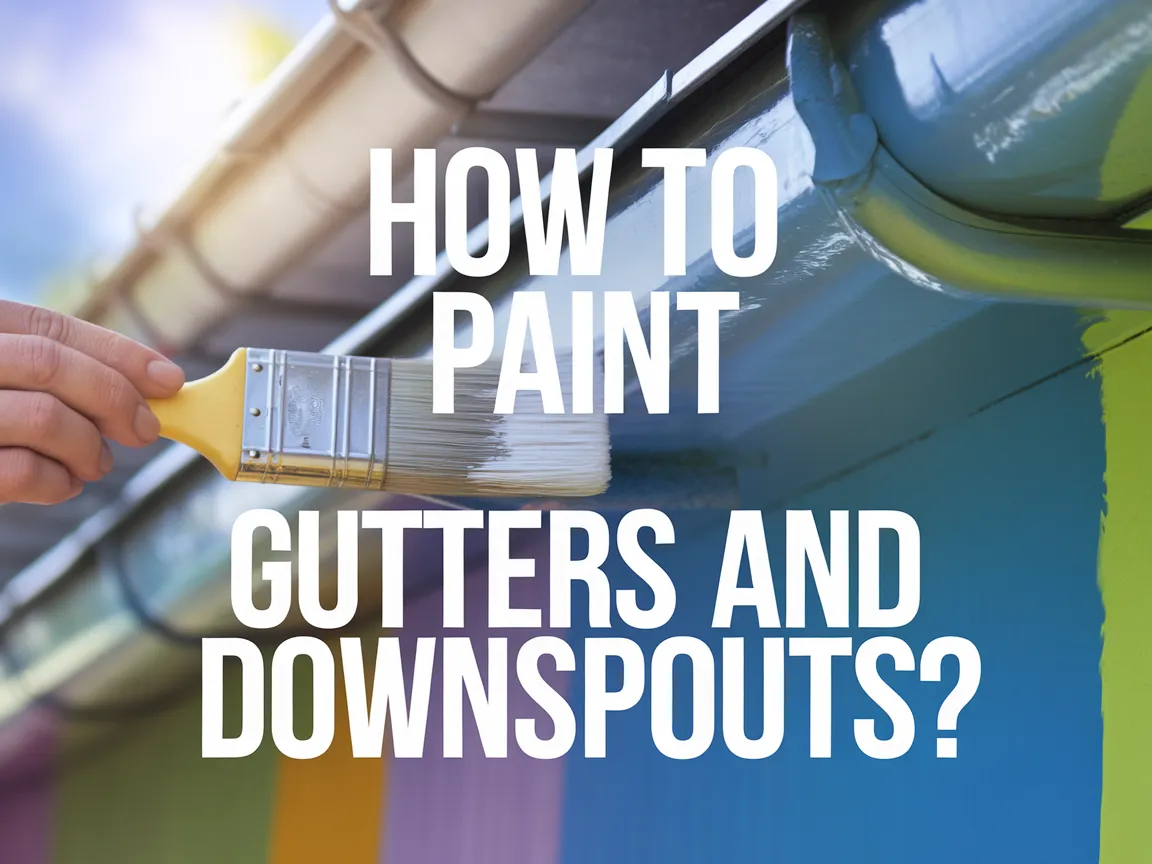Can PVC Fence Be Painted?
Published on: April 8, 2025 | Last Updated: January 7, 2025
Written By: Sarah McClintock
A PVC fence is like a magic wall made from special plastic. It’s strong, colorful, and keeps your yard safe from wandering pets and curious friends.
You might wonder, can PVC fence be painted? Knowing the answer helps you decide on style and maintenance. I’ve been there, wanting to change up my fence’s look without breaking the bank.
In this article, you’ll explore factors before painting, the right steps, color choices, suitable paint types, common painting challenges, finishing touches, and fun DIY ideas. You’ll even learn about costs, like how much does it cost to paint a fence. Get ready to bring your creative vision to life!
Contents
- 1 Can PVC Fence Be Painted?
- 2 What is a PVC Fence?
- 3 Before You Start Painting Your PVC Fence
- 4 Steps to Successfully Paint a PVC Fence
- 5 Types Of Paint Suitable for PVC Fencing
- 6 Factors Affecting the Painting Of PVC Fences
- 7 Common Issues When Painting a PVC Fence
- 8 Finishing Touches to Enhance Your PVC Fence
- 9 Long-Term Maintenance for Painted PVC Fences
- 10 How Long Will the Paint Last on a PVC Fence?
- 11 Cost Breakdown of Painting a PVC Fence
- 12 Best Practices for Touch-Up Painting
- 13 Environmental Impact of Painting PVC Fences
- 14 Frequently Asked Questions (FAQs)
- 15 Conclusion
- 16 Additional Resources
Can PVC Fence Be Painted?
Yes, you can paint a PVC fence! It requires special paint for plastic surfaces. Make sure to clean and prep the surface well. Expect to spend around $30 to $50 (USD) per gallon of paint.
What is a PVC Fence?
A PVC fence is a durable, weather-resistant barrier made from polyvinyl chloride (PVC). These fences can last over 30 years, resisting rot, rust, and insect damage.
The Finishing Touch
A freshly painted wall is a blank canvas. The best way to bring your room to life is with a single piece of statement art that ties everything together.
Browse Wall Art at Big Wall DecorYou might wonder if a PVC fence can be painted. Many people have asked this, and I considered it for my own fence out of curiosity.
It helped me secure a property quickly without worrying about maintenance. The idea of painting a PVC fence was tempting, but I was reluctant due to the costs. Generally, the price to paint a fence varies, with average costs ranging from $1 to $3 per square foot (0.09 To 0.28 M²), which can add up quickly! If you’re curious about the historical context of painting techniques, you might be interested in exploring Bosch’s painting preservation methods.
Before You Start Painting Your PVC Fence
What do you need to get started?
- High-Quality Outdoor Paint: Choose Behr Premium weatherproof semi-gloss paint designed for vinyl and plastic surfaces. It adheres well and lasts longer, keeping your fence looking fresh.
- PVC Primer: Use Zinsser Bulls Eye 1-2-3 Primer, specially formulated for plastic. The primer prepares the PVC surface, helping the paint adhere better and reducing chipping.
- Spray Gun or Roller: Get a Wagner Control Spray Max or a 23 cm (9-inch) paint roller. This helps achieve an even finish and speeds up painting, covering large areas efficiently.
- Protective Gear: Wear N95 respirator masks and gloves from brands like 3M. They protect you from fumes and skin irritation, ensuring a safe painting environment.
We have now covered preparation and considerations for painting your PVC fence. Next, we will discuss the steps to successfully paint it.
Also See: How to Cover Up Chipped Paint on Wall? Quick Fix Tips

Steps to Successfully Paint a PVC Fence
Here are the steps to effectively paint your PVC fence.
-
Preparation Of the Fence Surface
Clean your PVC fence thoroughly with a mixture of soap and water, scrubbing away dirt and grime; a pressure washer can help.
Ensure the surface is completely dry before proceeding. Residual moisture can cause paint to peel or not adhere properly.
-
Selecting the Right Paint
Choose a high-quality acrylic latex paint formulated for plastic surfaces. Look for options explicitly labeled as suitable for PVC or vinyl; they provide the best adhesion and finish.
Be aware that darker colors absorb more heat, leading to fading or warping. Lighter shades tend to hold up better over time.
-
Applying Primer (if Needed)
Consider using a primer, especially if your fence has never been painted. Apply an exterior-grade bonding primer specifically formulated for PVC to improve adhesion.
Let the primer dry completely, following the manufacturer’s instructions, usually around 24 hours. This step enhances the durability of your paint job.
-
Painting the PVC Fence
Once the primer is dry, apply the paint using a brush, roller, or spray paint for a smooth finish.
Two coats are recommended for even coverage. Let the first coat dry according to the paint directions, often 2-4 hours, before applying the second coat.
-
Final Touches and Drying
After the final coat, let your fence dry completely for at least 24 hours without touching it. Ensure the weather is dry and moderately warm for the best results.
Check for any touch-up spots once it’s dry to the touch. Adding a clear coat can provide extra protection, especially if your fence is frequently exposed to the elements.
We’ve wrapped up the steps to successfully paint a PVC fence. Let us turn our attention to suitable paint types for PVC fencing.
The Finishing Touch
A freshly painted wall is a blank canvas. The best way to bring your room to life is with a single piece of statement art that ties everything together.
Browse Wall Art at Big Wall DecorTypes Of Paint Suitable for PVC Fencing
Let’s discuss the types of paint you can use on PVC fencing: Acrylic, Epoxy, Vinyl, and Marine Paint.
-
Acrylic Paint
Acrylic paint adheres well to PVC and provides a durable finish. It’s water-based and typically costs between $15-$40 (USD) per gallon (3.8 Liters).
-
Epoxy Paint
This tough type is resistant to wear and can last for years. Expect to pay around $30-$60 (USD) per gallon (3.8 Liters), making it a worthwhile investment.
-
Vinyl Paint
Vinyl paint is specifically designed for PVC surfaces, forming a flexible, protective layer. Prices usually range from $20-$45 (USD) per gallon (3.8 Liters), making it a solid choice.
-
Marine Paint
Marine paint offers extra protection from moisture and rust. You can find it for about $25-$75 (USD) per gallon (3.8 Liters), which is great for coastal areas.
This reminds me of a valuable lesson learned while using acrylic paint. It resists fading and handles various weather conditions, which is ideal if you live in a sunny or rainy area.
We covered suitable paint types for PVC fencing. We will now cover factors influencing painting PVC fences.
Factors Affecting the Painting Of PVC Fences
What factors impact the success of painting your PVC fence?
-
Surface texture: A smooth surface may prevent paint from adhering properly.
-
Type of paint: Using the wrong type can cause peeling or inadequate coverage.
-
Weather conditions: Extreme temperatures can affect how well paint dries and adheres.
-
Preparation: Proper cleaning and priming are essential for a durable, even finish.
You should now have a good understanding of the elements influencing PVC fence painting. In the next part, we’ll discuss common painting problems.
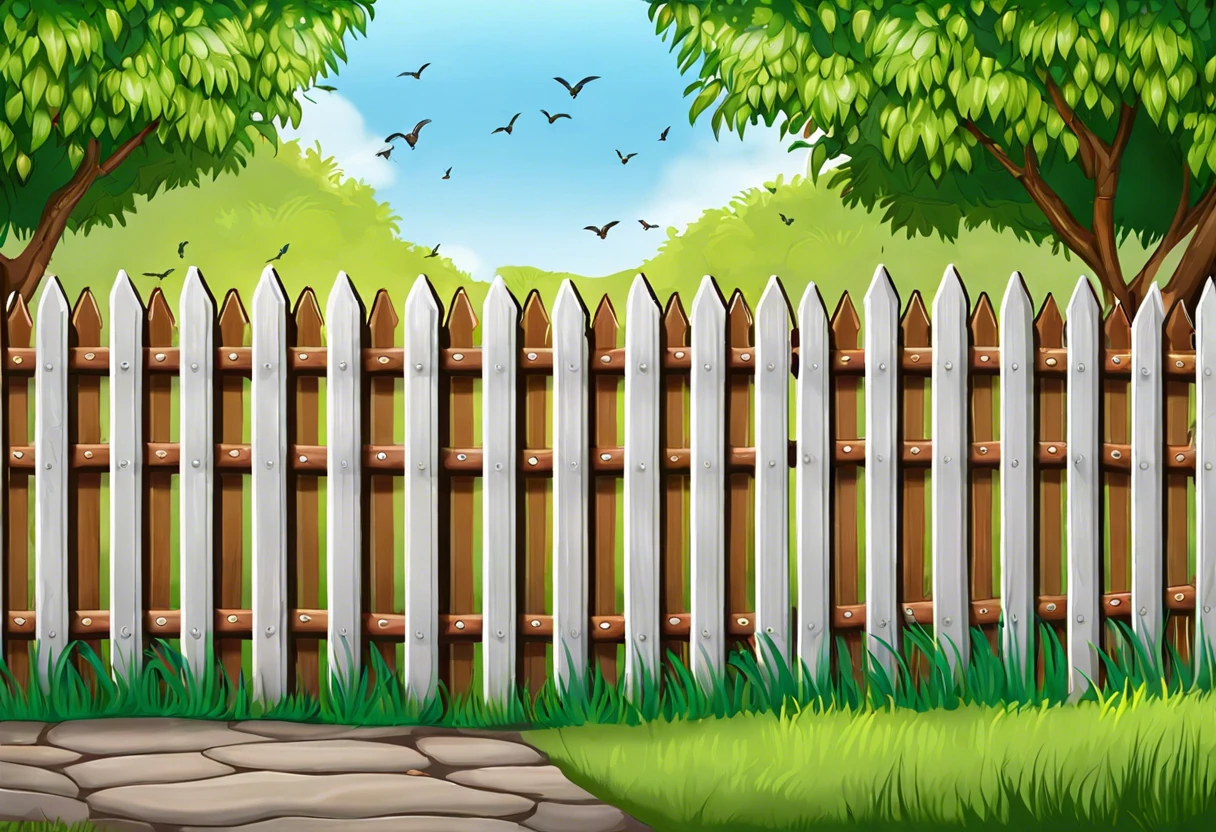
Common Issues When Painting a PVC Fence
My friend once painted her PVC fence and faced peeling after a month. The problem? She didn’t clean it properly beforehand.
To fix this, rinse the fence with a 2% detergent solution. Allow it to dry, then apply high-quality exterior acrylic paint. Budget around $200 for materials and tools, depending on the fence painting techniques. If you’re curious about professional painting techniques, check out the preferred paint brands of experts.
Finishing Touches to Enhance Your PVC Fence
After painting, clean your PVC fence regularly with a soft cloth and soapy water. Use a diluted bleach solution (1:10 Mix) to prevent mildew (Fungus) growth.
Inspect for scratches, chips, or fading every six months. Use products like PVC cleaner or a finisher, such as Restor-A-Finish, to maintain its color and smooth finish.
If you’ve got a few years of maintenance under your belt, consider power washing at 3000 psi (20.68 Mpa) as needed. This keeps the surface even and fresh.
Long-Term Maintenance for Painted PVC Fences
Once your PVC fence is painted, you’ll want to keep it looking fresh for years to come.
-
Regular Cleaning Routine
To maintain your fence’s appeal, wash it at least twice a year.
A simple soap and water solution works well. Rinse thoroughly to avoid soap residue.
-
Inspect for Damage
Check for any chips or scratches every 6 months. Touch up these areas promptly to prevent further issues.
A quick fix can save you from a bigger job later!
-
Seasonal Check-Ups
Before winter or heavy rain, inspect the fence. Look for signs of moisture buildup that could lead to peeling or mold.
Address issues immediately to keep your fence in tip-top shape!
The Finishing Touch
A freshly painted wall is a blank canvas. The best way to bring your room to life is with a single piece of statement art that ties everything together.
Browse Wall Art at Big Wall Decor
How Long Will the Paint Last on a PVC Fence?
Curious about the longevity of your paint job? Let’s break it down.
- Quality of Paint: High-quality paints last longer. Expect 5 to 10 years with good maintenance.
- Environment: Sunlight and rain can affect durability. Fences in sunny areas may fade faster.
- Maintenance: Regular cleaning and touch-ups can extend the life of your paint job.
- Application Technique: Proper application techniques, like using a primer, significantly improve paint lifespan.
Cost Breakdown of Painting a PVC Fence
Wondering how much it’ll set you back? Here’s a quick cost breakdown.
| Item | Cost (USD) | Details |
|---|---|---|
| Paint | $30 to $50 | Per gallon (3.8 Liters), depends on quality. |
| Primer | $15 to $25 | Essential for better adhesion. |
| Tools and Supplies | $20 to $100 | Rollers, brushes, tape, and drop cloths. |
| Total Estimate | $65 to $175 | For an average-sized fence. |
Best Practices for Touch-Up Painting
Touching up paint? Here are some best practices to keep in mind:
- Timing: Do touch-ups on a dry day with mild temperatures for best adhesion.
- Clean the Area: Remove dirt or chips before applying new paint to ensure smooth blending.
- Test First: Always test your paint color on a small area to see how it matches.
- Layer Gradually: Apply in thin layers for even coverage. Let dry between coats.
Environmental Impact of Painting PVC Fences
You might not think about it, but painting your fence can have environmental effects. Let’s dive in.
| Impact Factor | Description | Consideration |
|---|---|---|
| Volatile Organic Compounds (VOCs) | Many paints emit gases that can be harmful to air quality. | Choose low-VOC or zero-VOC options to reduce this impact. |
| Disposal of Old Paint | Paint cans can be hazardous waste if not disposed of properly. | Check local regulations for safe disposal to protect the environment. |
| Longevity | A well-painted fence lasts longer, which reduces waste in the long run. | Invest in quality paints and upkeep to maximize durability. |
Frequently Asked Questions (FAQs)
What is the Best Paint for a PVC Fence?
The best paint for a PVC fence is a liquid vinyl or acrylic-based paint. These paints adhere well and resist fading due to UV damage, which is crucial for outdoor use. Choose paint specifically designed for plastic materials to ensure longevity and vibrant color.
How Long Does a Painted PVC Fence Last?
A painted PVC fence can last up to 10 years with proper maintenance. Regular attention, especially in harsh climates, will help maintain its integrity and appearance. Non-fade paints generally extend the lifespan significantly. When selecting exterior paint for your PVC surfaces, you might want to explore exterior paint solutions that enhance durability.
Can You Paint a PVC Fence in Cold Weather?
No, you shouldn’t paint a PVC fence in cold weather. Low temperatures can cause the paint to dry unevenly and result in peeling. Ideally, aim for temperatures above 10°C (50°F) for optimal adhesion and finish. If you’re curious about painting techniques for uniform surfaces, check out painting uniform color applications.
Will Painting a PVC Fence Void Its Warranty?
Unity. Yes, painting a PVC fence can void its warranty. Most manufacturers recommend against altering the material, as it might interfere with inherent properties. If you’re curious about alternative painting techniques, you might want to explore creative painting methods for surfaces. Always check your warranty details before making modifications to avoid potential issues.
Is There a Special Technique for Painting Curved Sections Of a PVC Fence?
Yes, different techniques are necessary for painting curved sections of a PVC fence. Use a brush or a roller for more control, ensuring the paint adheres well on uneven surfaces to leave a smooth finish. Avoid spraying as it may not achieve even coverage. When working with metal surfaces, you might want to explore specific painting techniques for metal.
How Much Does It Cost to Paint a PVC Fence?
Painting a PVC fence typically costs between $1.50 to $3.50 per square foot. This price includes materials and labor. Keep in mind that the cost may vary with region and fence size, so it’s wise to request multiple quotes. If you’re looking to expand your painting skills beyond fences, you might want to explore painting techniques for marine surfaces.
Also See: Can You Paint Bathroom Tile Wall? Yes, Here’s How!
Conclusion
We’ve reached the end, and I appreciate you sticking around. We covered whether a PVC fence can be painted, what a PVC fence is, steps to prep for painting, suitable paint types, color recommendations, factors that affect painting, common issues, finishing touches, and some fun DIY project ideas.
So, can a PVC fence be painted? The answer is yes, but it takes some know-how. Hopefully, I was able to impart some of my experience with things like choosing the right type of paint, ensuring proper prep, and tackling those common challenges. With the right approach, you can easily enhance your PVC fence.
For more detailed articles and resources, explore our homepage: Paint Answers, where you can find all the information you need!
Additional Resources
- Loomis, A. (2011). Figure Drawing for All It’s Worth. New York, NY: Titan Books.
- Can You Paint A Vinyl Fence? How To Clean A Vinyl Fence | PaintRite Pros – PaintRite Pros
- How to Paint a Vinyl Fence | DoItYourself.com
- Can you paint a vinyl fence? – Pacific Fence & Wire Co.






